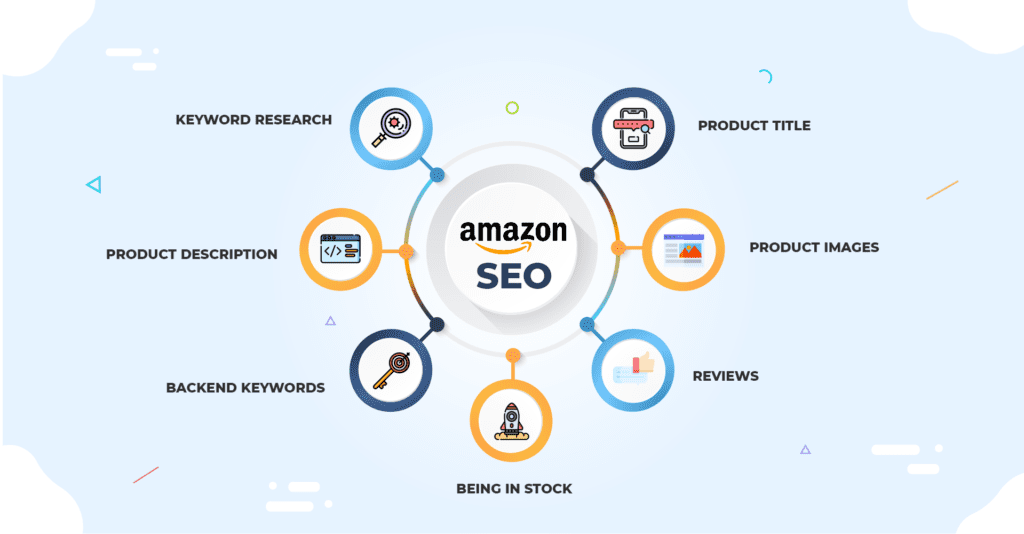Outline for “Mastering Amazon SEO Phase 2: Strategies for Keyword Optimization” by The We One
Mastering Amazon SEO Phase 2: Strategies for Keyword Optimization
Amazon is a vast marketplace, and succeeding as a seller means staying ahead of the competition. In this article, The We One dives into Phase 2 of Amazon SEO, focusing on strategies for keyword optimization to help your products stand out. From leveraging Amazon Seller Central to tailoring listings for buyer intent, here’s a comprehensive guide to take your Amazon SEO game to the next level.
1. Introduction to Amazon SEO Phase 2
Amazon SEO isn’t a one-and-done task. While Phase 1 lays the groundwork by ensuring your product is visible, Phase 2 focuses on refining your strategies for better performance. In this phase, keyword optimization becomes the cornerstone of your SEO efforts, helping you climb search rankings and increase sales.
2. Keyword Optimization: The Heart of Phase 2
Keyword optimization involves strategically selecting and placing the right keywords in your product listings. This includes:
- Primary Keywords: Broad terms like “Amazon SEO tools.”
- Secondary Keywords: More specific terms, e.g., “best Amazon SEO strategies.”
- Long-Tail Keywords: Highly specific phrases like “how to master Amazon keyword optimization in 2024.”
Using tools like Helium 10 or Jungle Scout, sellers can discover high-performing keywords tailored to their niche.
3. Leveraging Amazon Seller Central for SEO
Amazon Seller Central isn’t just for managing orders; it’s a powerful tool for SEO. By understanding its features, you can optimize your product listings and improve team efficiency with user permissions that ensure smooth collaboration.
4. Best Practices for User Permissions
Granting appropriate user permissions in Amazon Seller Central is vital for seamless operations. Some tips include:
- Assign roles based on expertise.
- Regularly review user access to prevent errors.
- Use the “Manage Permissions” tab to control who can edit product listings.
5. Importance of Understanding FBA Seller Responsibilities
Amazon FBA sellers have a unique set of responsibilities, from managing inventory to handling customer queries. By understanding your duties, amazon keyword ranking, you can create SEO-friendly listings that meet both customer expectations and Amazon’s guidelines.
6. Exploring Amazon Custom Products
Custom products are gaining popularity on Amazon. They allow sellers to offer personalized items that cater to niche markets. Optimizing custom products involves using specific keywords, amazon keyword ranking, such as “custom mugs for weddings” or “personalized gifts for anniversaries.”
7. Comparison: FBA vs. SFP
When comparing Fulfillment by Amazon (FBA) and Seller-Fulfilled Prime (SFP), the choice depends on your business model.
- FBA: Easier logistics but higher fees.
- SFP: Greater control over shipping but requires operational efficiency.
Both methods require tailored SEO strategies to maximize visibility and sales.
8. Tools and Metrics for Keyword Optimization
Popular tools like Google Keyword Planner and AMZScout help sellers discover effective keywords. Metrics such as search volume and conversion rates should guide your optimization process.
9. Tailoring Listings to Buyer Intent
Understanding what your target audience is searching for is crucial. Use buyer intent data to create listings that resonate with their needs, increasing the likelihood of conversions.
10. Enhancing Product Descriptions for SEO
Well-crafted descriptions with naturally incorporated keywords can significantly boost your rankings. Ensure your descriptions are concise, engaging, and informative.
11. Improving Backend Search Terms
Backend search terms don’t appear on your product listing but play a critical role in visibility. Use synonyms, alternate spellings, amazon keyword ranking, and relevant keywords to maximize discoverability.
12. The Role of A/B Testing in Keyword Optimization
Testing two versions of your product listing can reveal what works best for your audience. Use A/B testing to refine titles, descriptions, and images for better results.
13. Building a Strong Review and Rating System
Positive reviews impact both SEO and sales. Encourage customers to leave feedback, and promptly address any issues to maintain a high rating.
14. Tracking and Adjusting Strategies
SEO is an ongoing process. Monitor your keywords and adjust your strategies based on performance data. Tools like SellerApp can help automate this process.
FAQs About Amazon SEO Phase 2
- What is Phase 2 of Amazon SEO?
- Phase 2 focuses on advanced strategies, such as keyword optimization, to improve product visibility and sales.
- How do I assign user permissions in Amazon Seller Central?
- Navigate to “Settings” > “User Permissions” and customize roles based on access needs.
- What are the main responsibilities of an FBA seller?
- Managing inventory, ensuring accurate listings, and adhering to Amazon’s guidelines.
- Is FBA or SFP better for SEO?
- Both have pros and cons; the choice depends on your business model and goals.
- How can I optimize custom products for SEO?
- Use niche-specific keywords and highlight customization options in your descriptions.
- What tools are best for keyword research?
- Popular tools include Helium 10, Jungle Scout, and AMZScout.
Conclusion
Keyword optimization is a pivotal part of amazon keyword ranking, and The We One is here to guide sellers through every step. By implementing these strategies, you can enhance your product visibility, improve sales, and build a stronger presence on Amazon.


